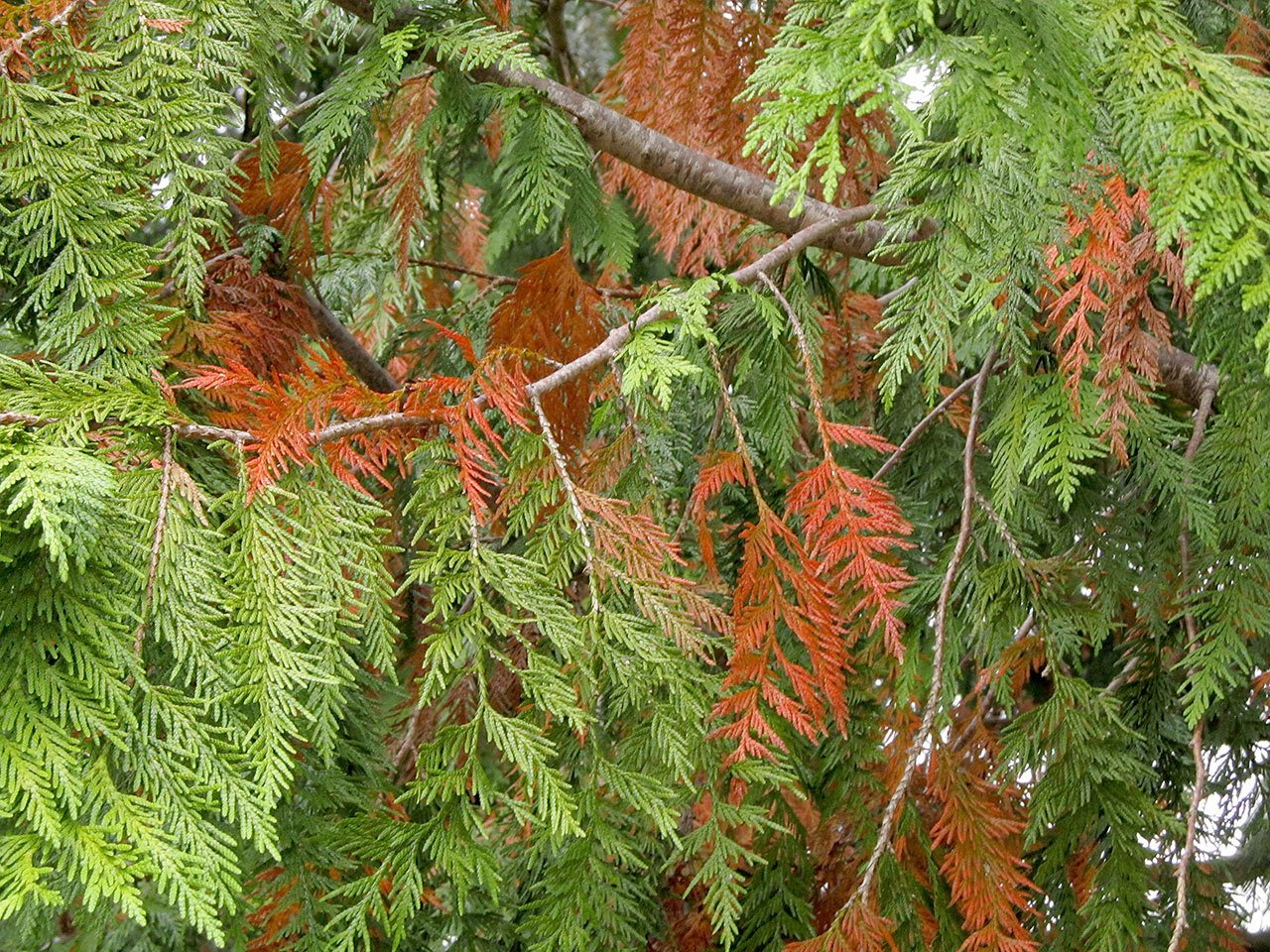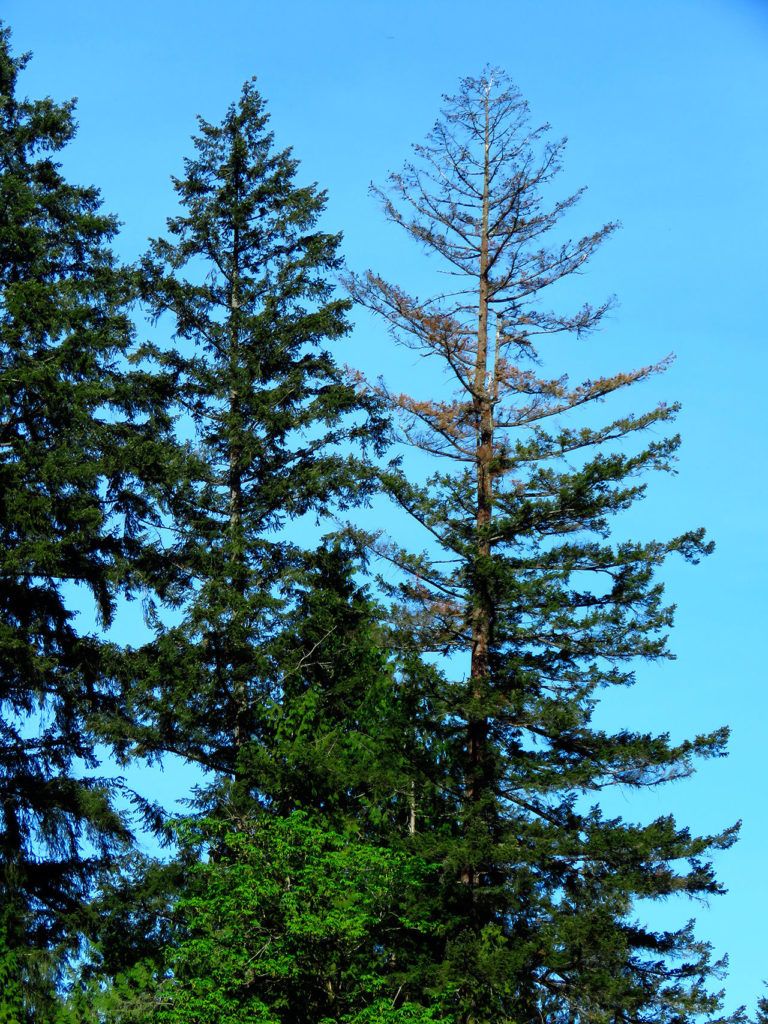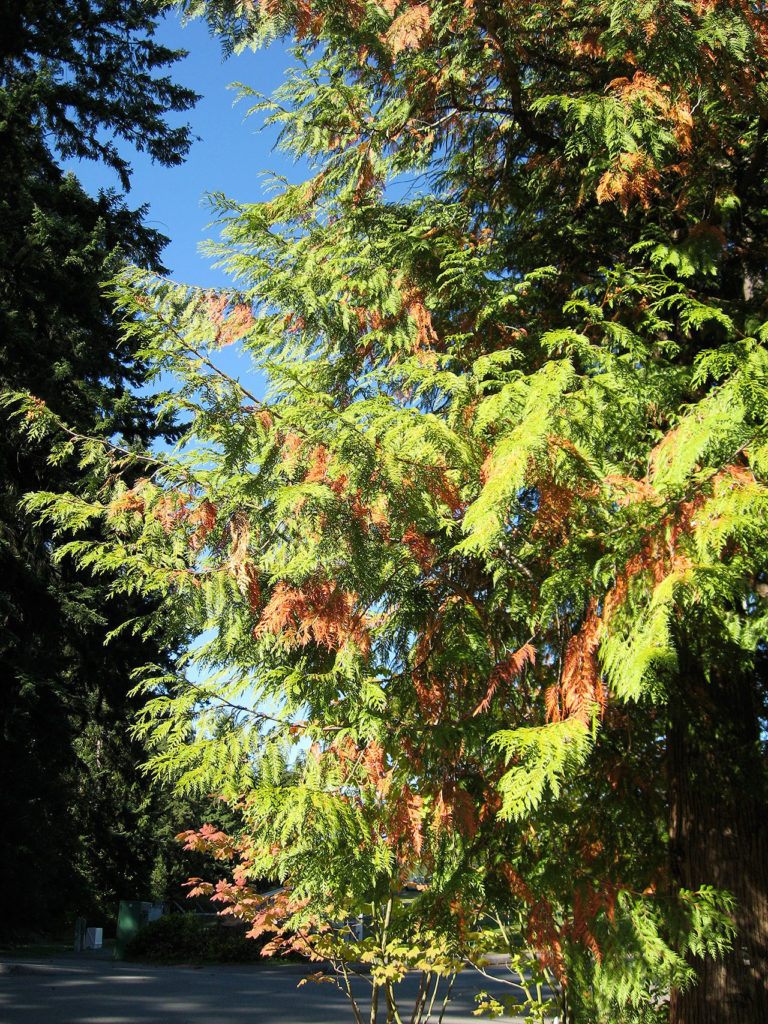Every year, just about this time, Kevin Zobrist takes a few frantic calls at the Washington State University Extension office near Mill Creek.
“Why is my cedar tree dying?”
Zobrist, a WSU forestry professor, typically replies, “It’s not.”
The hot and dry summers of late have indeed messed with our trees.
But Zobrist offers explanations and encouragement.
So if the tree isn’t dying, why are people upset?
Because they see deciduous trees rapidly losing their leaves and the interior branches of cedars turning orange.
It’s called seasonal foliage loss. It’s normal. This is the time of year when trees are most water-stressed. They are just hanging on until the heavy fall rains. So there’s not enough energy to keep everybody on the payroll, and the foliage losses are the layoffs.
Leaves falling, we understand that. But evergreens dropping foliage?
People are not as aware that evergreen trees drop foliage, too. The reason it’s so prominent on cedars is that the orange is very striking. The foliage next to the trunk gets less sunlight and it can have five years of scunge on it. So it’s costing the tree more to maintain those interior branches than they are giving back in photosynthesis. It’s the end-of-summer housekeeping.
So on Sept. 15, the cedars might look terrible. But check on Nov. 15 and the storms will have blown all that orange out and the tree will look fine.
During years when we’ve had little rain, does foliage loss becomes more obvious?
We have had some extreme summer events in terms of heat and drought — last summer was the hottest summer on record and this past July was the hottest on record. So, yes, some people are seeing abnormal foliage loss right now and, for some, it is happening a little earlier.
Some deciduous trees have been dropping leaves since mid-August. Some of the typical early shedders, such as vine maples, are past red and already brown. They are ceasing operations earlier in the year because of lack of water. We might see some growth loss, but the great thing about trees is that they can try again next year.
This summer wasn’t as bad as last, but we saw more mortality this year. Successive years of droughtlike conditions can make a tree weak. The trees that survived last year’s drought didn’t have a lot of energy reserved.
Are hotter, drier summers something we should expect?
We know climate change and warmer-than-average conditions are a long-term trend, but we will see fluctuations. My feeling is that if we get normal summer temperatures and normal rainfall patterns throughout the year, I think things will even out with the trees.
In terms of an accelerated climate change, forests don’t move very fast. It could be that humans will have to help that migration. Moving species north and into higher elevations is being discussed.
What about all the dead trees around the region?
We’re seeing mortality with hemlocks because they have no drought tolerance. We have seen a lot of self-pruning conifers shedding lower branches and the tops of trees.
I remind people that if they lose a big tree, they gain wildlife habitat. About 40 percent of wildlife species rely on dead trees, snags and large woody debris for shelter, food and more. The irony is that trees often provide more life in death than when the trees were living.
Are you saying people should incorporate dead trees into their landscapes?
You can always incorporate a log or even a short snag into a landscape. Dead wood is not contagious. Diseases don’t spread that way.
Don’t cut down stressed-out trees right away. Sometimes they do recover.
What is the best way to water a young tree?
Supplemental water has to penetrate deep in a wide area. Leaving a soaker hose overnight is a good idea if you can afford it.
What are some native trees that can tolerate some drought conditions?
Madrone, native pine, Garry oak and Doug fir are more drought tolerant. Hemlock and cedar are not. A good place to research native trees is on our forestry website, forestry.wsu.edu/nps.
And is your book a good resource?
Sure.
(Zobrist’s “Native Trees of Western Washington: A Photographic Guide” is 140-page soft-cover, full-color book published by Washington State University Press.)
Talk to us
> Give us your news tips.
> Send us a letter to the editor.
> More Herald contact information.



























